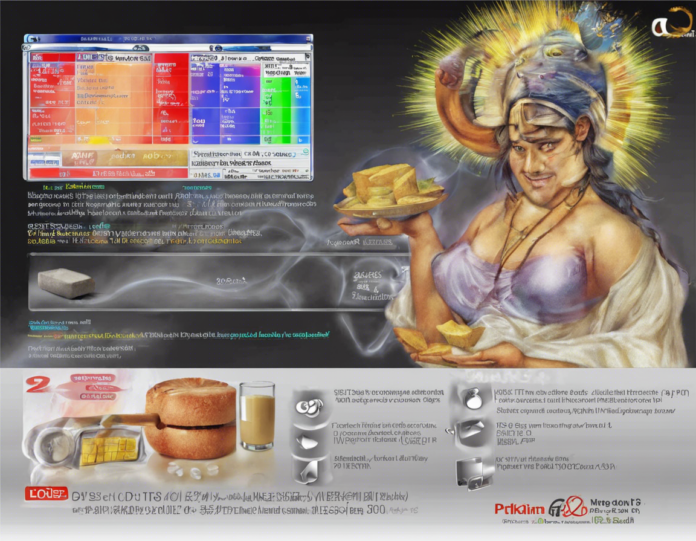Introduction
Pan D Tablets are a popular over-the-counter medication used to treat gastrointestinal issues. These tablets contain a combination of two active ingredients, Pantoprazole and Domperidone, which work together to provide relief from various digestive problems. In this article, we will explore the uses of Pan D Tablets in detail, including how they work, common dosage recommendations, potential side effects, and more.
Understanding Pan D Tablets
Pan D Tablets are a combination medication that contains Pantoprazole, a proton pump inhibitor (PPI), and Domperidone, a dopamine antagonist. Pantoprazole works by reducing the amount of acid produced in the stomach, which helps to relieve symptoms of acid reflux, heartburn, and other stomach-related issues. Domperidone, on the other hand, helps to speed up the movement of food through the digestive system, reducing feelings of nausea and promoting faster digestion.
Uses of Pan D Tablets
1. Acid Reflux and Heartburn: Pan D Tablets are commonly used to treat conditions like gastroesophageal reflux disease (GERD), where stomach acid flows back into the esophagus, leading to symptoms like heartburn, acid regurgitation, and chest pain.
2. Indigestion: Pan D Tablets can help relieve symptoms of indigestion, such as bloating, discomfort, and a feeling of fullness after eating.
3. Gastritis: Pan D Tablets may be prescribed to treat gastritis, an inflammation of the stomach lining that can cause pain, bloating, and nausea.
4. Peptic Ulcers: These tablets are also used in the treatment of peptic ulcers, which are sores that develop on the lining of the stomach or small intestine due to excessive acid production.
5. Delayed Gastric Emptying: Pan D Tablets containing Domperidone are effective in treating conditions like gastroparesis, where there is a delay in the emptying of food from the stomach into the small intestine.
Dosage Recommendations
The dosage of Pan D Tablets can vary depending on the specific condition being treated and the individual’s response to the medication. It is essential to follow the instructions provided by a healthcare professional or the information on the medication label. In general, the typical dosage for adults is one Pan D Tablet to be taken orally before meals, usually once or twice a day. However, it is crucial not to exceed the recommended dose without consulting a doctor.
Potential Side Effects
While Pan D Tablets are generally considered safe when used as directed, some individuals may experience side effects. Common side effects of Pantoprazole include headaches, nausea, abdominal pain, diarrhea, and dizziness. Domperidone can cause side effects like dry mouth, drowsiness, headache, and changes in menstrual periods. If any of these side effects persist or worsen, it is important to seek medical attention.
Precautions and Warnings
– Pregnant or breastfeeding women should consult a doctor before using Pan D Tablets.
– Individuals with liver or kidney problems should use this medication with caution and under medical supervision.
– It is essential to inform healthcare providers about all medications, supplements, and medical conditions before starting Pan D Tablets to avoid potential drug interactions.
FAQs (Frequently Asked Questions)
1. Can Pan D Tablets be taken on an empty stomach?
Pan D Tablets are typically taken before meals to help with digestion. However, it is best to follow the instructions provided by a healthcare professional.
-
How long does it take for Pan D Tablets to start working?
The onset of action of Pan D Tablets can vary, but many individuals experience relief within a few hours of taking the medication. -
Are there any dietary restrictions while taking Pan D Tablets?
While there are no specific dietary restrictions, it is recommended to avoid spicy, acidic, and fatty foods that can trigger acid reflux or indigestion. -
Can Pan D Tablets be taken alongside other medications?
It is essential to consult a healthcare provider before taking Pan D Tablets with other medications to prevent potential drug interactions. -
Are Pan D Tablets safe for long-term use?
Long-term use of Pan D Tablets should be under the guidance of a healthcare provider to monitor for any potential side effects or complications. -
Can Pan D Tablets be used in children?
Pan D Tablets should only be used in children under the supervision and guidance of a pediatrician. -
What should I do if I miss a dose of Pan D Tablets?
If you miss a dose of Pan D Tablets, take it as soon as you remember. However, if it is almost time for your next dose, skip the missed dose and continue with your regular dosing schedule. -
Can Pan D Tablets cause allergic reactions?
Some individuals may be allergic to ingredients in Pan D Tablets. If you experience symptoms like rash, itching, swelling, or difficulty breathing, seek immediate medical attention. -
Is it safe to drive or operate machinery after taking Pan D Tablets?
Pan D Tablets may cause dizziness or drowsiness in some individuals. It is important to assess your response to the medication before engaging in activities that require alertness. -
Can Pan D Tablets be used for weight loss purposes?
Pan D Tablets are not intended for weight loss and should only be used for their prescribed indications under medical supervision.
In conclusion, Pan D Tablets are a versatile medication used to treat a range of gastrointestinal issues effectively. However, it is crucial to use them as directed and under medical supervision to ensure safe and effective treatment. If you have any concerns or questions about Pan D Tablets, it is best to consult a healthcare provider for personalized advice and guidance.

